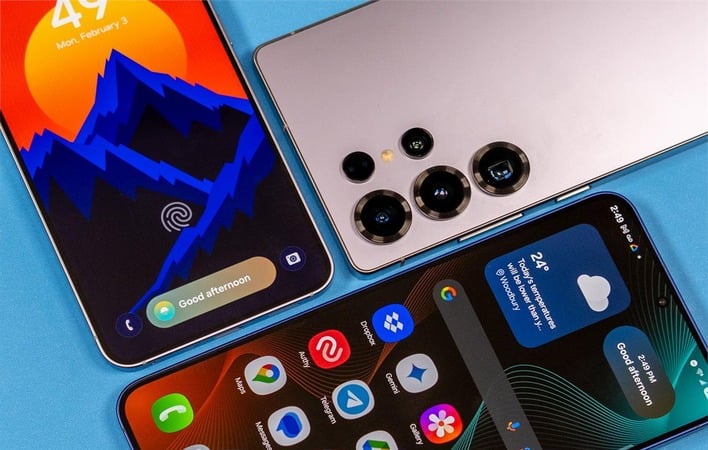
The last decade of flagship phone releases has seen manufacturers go all in on thinner and thinner designs, causing the devices to become repair nightmares. Apple has slowly made policy and design changes to reverse this pernicious trend. Now, it seems as if Samsung is ready to join its rival with its latest smartphone, the S25, which iFixIt calls one of the company’s “most repair-friendly phones in a long time.”
The shining star when it comes to the S25’s repairability is the phone’s battery. The power pack is held in place with a series of sticky pads that each have their own pull tabs, making them a breeze to remove without the use of any special skills or tools. It’s a big difference from prior years where the adhesive Samsung used made pulling the battery an almost impossible task.
It’s a big win for consumers because with flagship phones having so much power under the hood, the degradation of the battery will be the first thing users notice. Being able to easily replace it and continue using the device will be a viable path forward. It will also enable these devices to get a fresh battery swap and get sold to the next user rather than becoming e-waste.
The good news continues when it comes to the camera array on the S25. Samsung opted to use a modular design, where it’s possible to replace any one camera without needing to replace all of them. The company also didn’t use any strange mechanisms or go crazy with glue to hold the cameras in place, either. The only miss was the selfie camera, which does use a liberal amount of epoxy, making it a tricky repair for even a seasoned expert.
Despite these improvements, Samsung still has a ways to go. Documentation for performing repairs is lacking, and pricing of replacement parts suggest the company is trying to push customers away from doing it themselves. However, this is still a step in the right direction, and hopefully means even more repair friendly devices in the future.